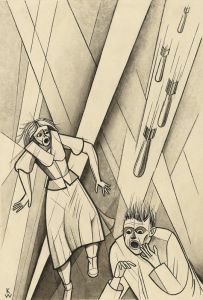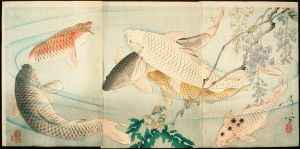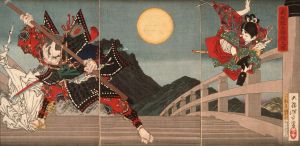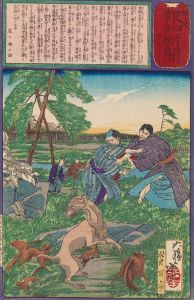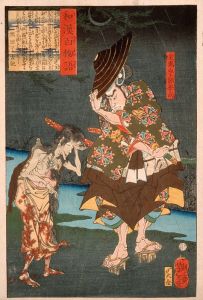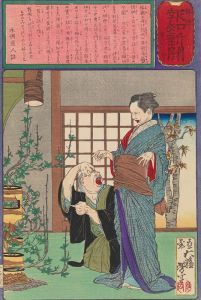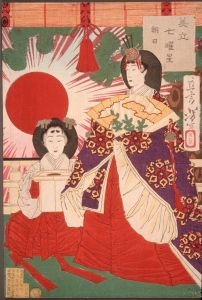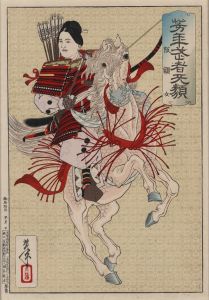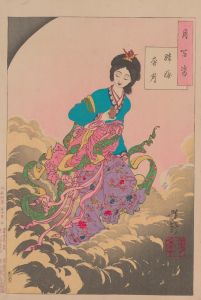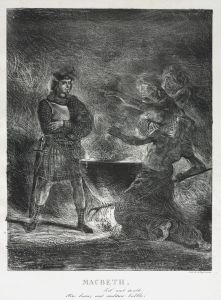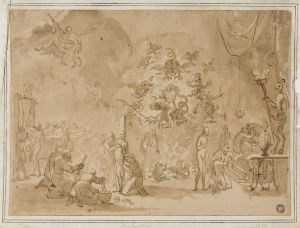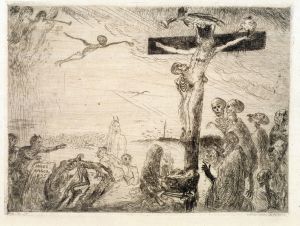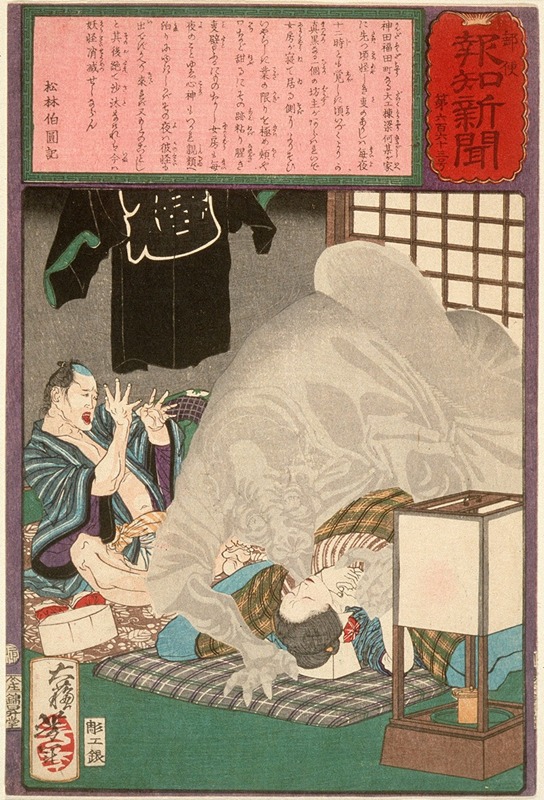
Black Monster Attacking a Carpenter’s Wife in Kanda
A hand-painted replica of Tsukioka Yoshitoshi’s masterpiece Black Monster Attacking a Carpenter’s Wife in Kanda, meticulously crafted by professional artists to capture the true essence of the original. Each piece is created with museum-quality canvas and rare mineral pigments, carefully painted by experienced artists with delicate brushstrokes and rich, layered colors to perfectly recreate the texture of the original artwork. Unlike machine-printed reproductions, this hand-painted version brings the painting to life, infused with the artist’s emotions and skill in every stroke. Whether for personal collection or home decoration, it instantly elevates the artistic atmosphere of any space.
"Black Monster Attacking a Carpenter’s Wife in Kanda" is a woodblock print created by the renowned Japanese artist Tsukioka Yoshitoshi. Yoshitoshi, born in 1839 and passing away in 1892, is often celebrated as one of the last great masters of the ukiyo-e genre of woodblock printing and painting. His works are known for their dramatic intensity, innovative compositions, and vivid depictions of both historical and supernatural themes.
This particular print, "Black Monster Attacking a Carpenter’s Wife in Kanda," is part of Yoshitoshi's series "New Forms of Thirty-Six Ghosts" (Shinkei Sanjūrokkaisen), which was published between 1889 and 1892. The series is a collection of ghost stories and supernatural events, reflecting the Meiji period's fascination with the eerie and the otherworldly.
The print depicts a dramatic and terrifying scene where a monstrous black creature is attacking a woman, identified as the wife of a carpenter, in the Kanda district of Tokyo. The image captures the moment of horror and chaos, with the monstrous figure looming over the distressed woman. Yoshitoshi's use of bold lines and stark contrasts enhances the sense of fear and urgency in the scene.
Yoshitoshi's work often delved into themes of violence, the supernatural, and the human condition, and this print is no exception. The artist's ability to convey intense emotion and narrative through his compositions is evident in the fearful expression of the woman and the menacing presence of the monster. The setting in Kanda, a well-known area in Tokyo, grounds the supernatural event in a real and familiar place, adding to the unsettling nature of the scene.
The "New Forms of Thirty-Six Ghosts" series is significant in Yoshitoshi's oeuvre as it showcases his mature style and his ability to blend traditional ukiyo-e techniques with new, innovative approaches. This series, including the "Black Monster Attacking a Carpenter’s Wife in Kanda," reflects the cultural and artistic transitions occurring in Japan during the late 19th century, as the country was rapidly modernizing and opening up to Western influences.
Yoshitoshi's prints from this period are highly regarded for their technical excellence and their ability to evoke a wide range of emotions. His work has had a lasting impact on the world of Japanese art and continues to be studied and admired for its artistic and historical significance.
In summary, "Black Monster Attacking a Carpenter’s Wife in Kanda" by Tsukioka Yoshitoshi is a compelling example of the artist's skill in depicting dramatic and supernatural themes. It is part of a larger series that captures the cultural zeitgeist of Meiji-era Japan, blending traditional and modern elements to create powerful and enduring works of art.





